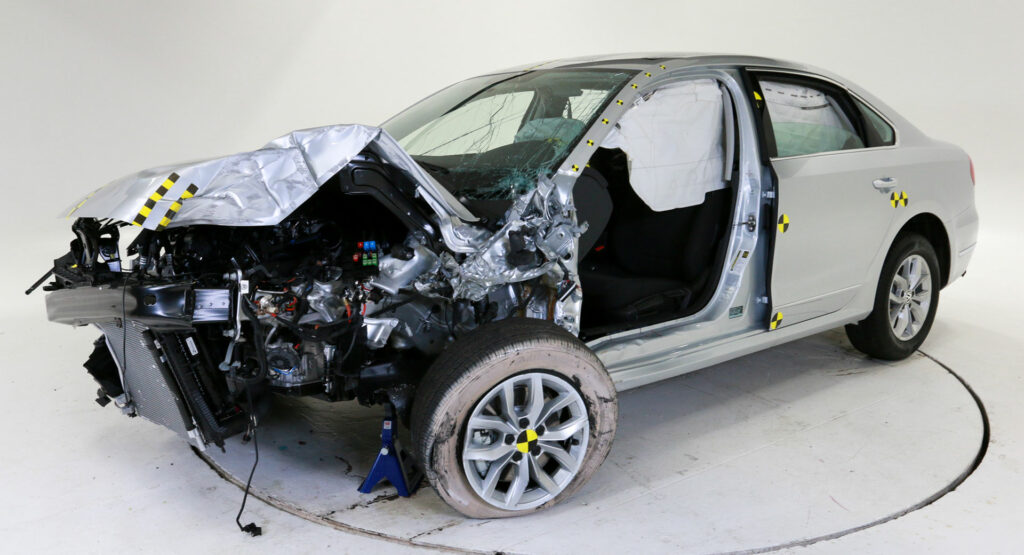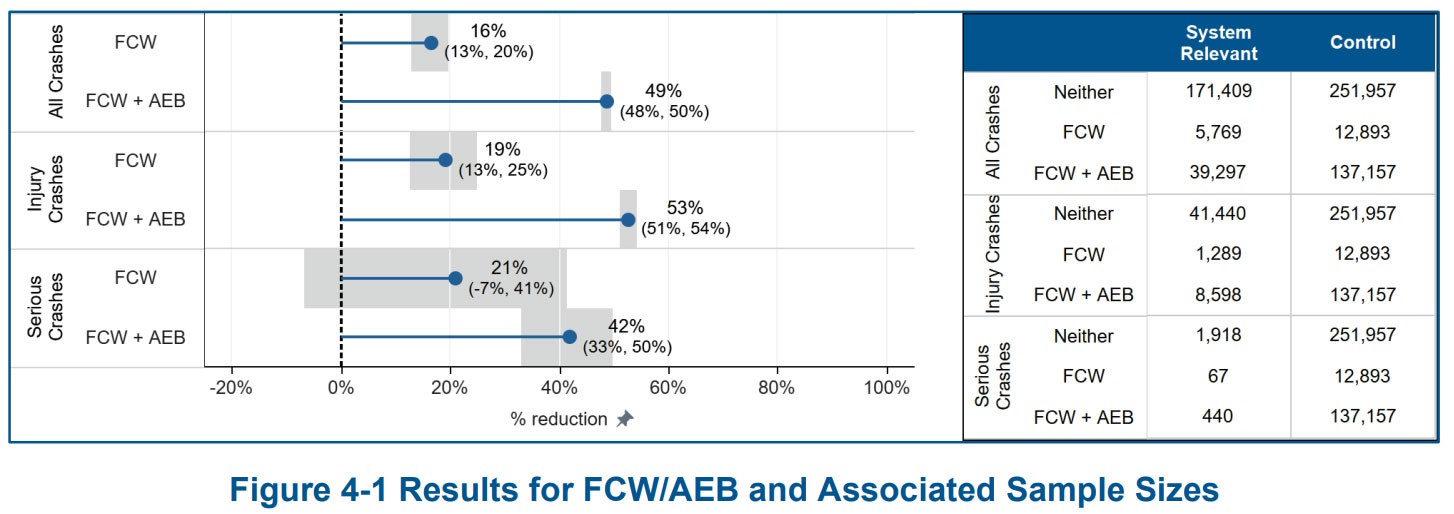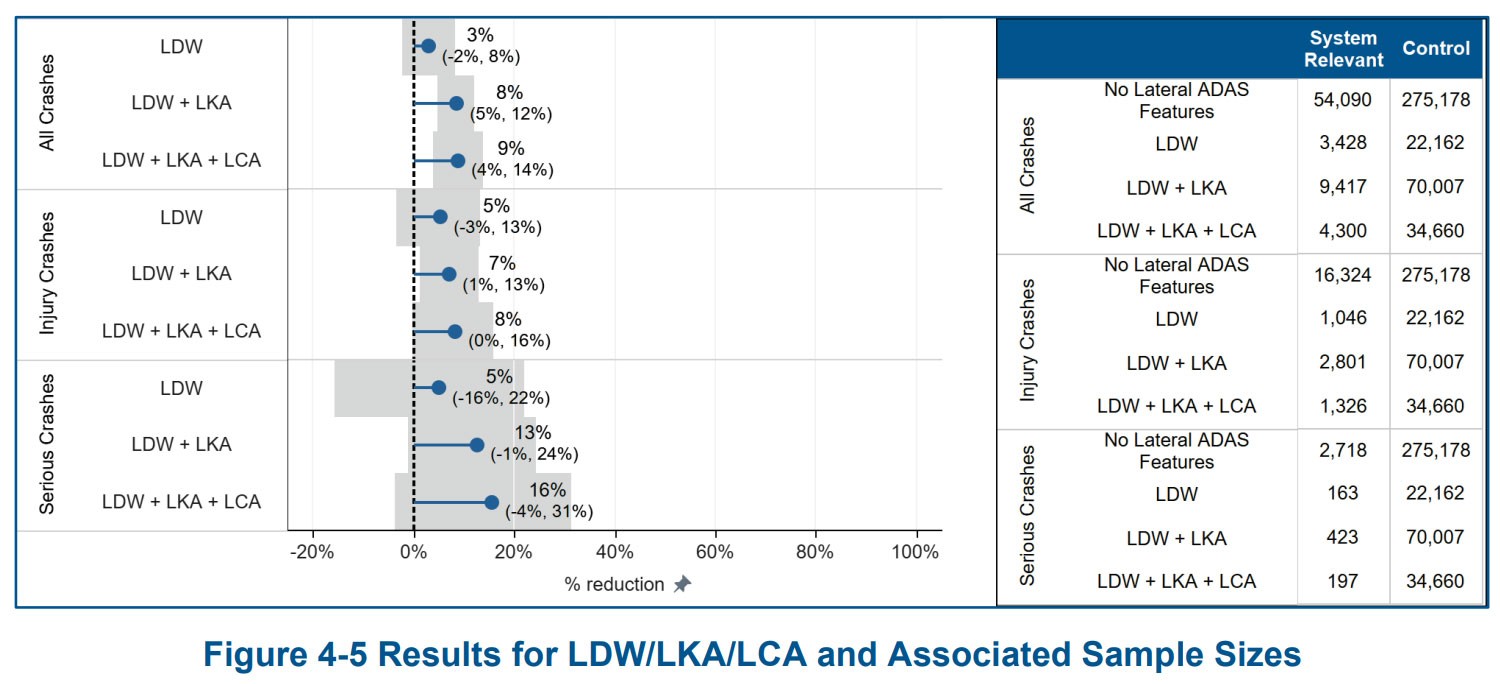A new study from MITRE and the Partnership for Analytics Research in Traffic Safety (PARTS) has found advanced driver assistance systems significantly reduce the chances of being involved in certain kinds of accidents.
In particular, front-to-rear crashes were reduced 49% when the striking vehicle was equipped with forward collision warning and automatic emergency braking, compared to striking vehicles that weren’t equipped with either. The systems also helped to reduce front-to-rear crash injuries by 53%.
It appears automatic emergency braking systems are doing the heavy lifting as forward collision warning systems, by themselves, only reduced front-to-rear crashes by 16% and cut the injury rate by 19%. That being said, forward collision warning systems were still found to provide a “substantial” increase in safety.
Also: Automatic Emergency Braking Systems Struggle And Fail Where They Would Be Most Useful
Furthermore, the study found that automatic emergency braking systems perform “extremely well in all conditions, even when roadway, weather, and lighting conditions are not ideal.”
The study also looked at the effectiveness of lane departure warning, lane keep assistance, and lane centering systems. The combination of lane departure warning and lane keep assistance helped to reduce single-vehicle road-departure crashes by 8%, while also reducing single-vehicle road-departure crash injuries by 7%.
When lane centering was thrown into the mix, there wasn’t much of a difference as single-vehicle road-departure crashes were only reduced by 9%. The study went on to say there were no “other significant results when analyzing injury or serious crashes with these features together, nor did it find [a] significant reduction for LDW alone.”
The study used “police-reported crash data and vehicle equipment data contributed by PARTS partners.” It examined 93 vehicle models from the 2015-2020 model years that crashed in 13 states over a nearly six year period.
Commenting on the results, PARTS Governance Board industry co-chair Tim Czapp said, “These emerging technologies can substantially reduce the number of crashes and improve safety outcomes.” He added, automatic emergency braking systems are “approaching standard deployment and with real-world effectiveness, [it] is helping mitigate injuries and lives lost.”










